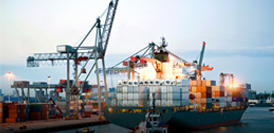Separator AWAS SBK
For treatment of rain water from gas stations including vehicle fuel storage, vehicle manoeuvring areas, car parks, repair garages, roads, process waters in water recycling systems and open car washes. Device integrated with sedimentation tank.
The AWAS BK is a coalescence separator equipped with a coalescent filter, an integrated sludge chamber and an automatic closure on outflow. The device is constructed on a reinforced concrete, monolithic tank of B45 class concrete, with W8 water resistance and F150 frost resistance, protected from the inside with an oil-resistant film. The internal surfaces are insulated with a water-resistant substance. For installation underground, can be fitted with a light-type cover, B class with B 125 kN manholes or heavy type, D cover with D 400 kN manholes . The separator’s internal equipment: Stainless steel fittings, coalescent insert, gaskets (oil-resistant rubber, e.g. Forsheda), automatic closure on the outflow with a float tared for a 0.85 g/cm3 density, connectors for fitting PVC pipes.
Waste water containing petroleum derivative substances flows into the oil separator where it undergoes preliminary treatment. The separator uses the difference between the specific gravities of water, petroleum derivatives and settling particles. Mechanical pollutants are trapped in the sludge sedimentation tank. Owing to their lower density and weight compared to water, the petroleum derivative substances automatically float to the surface of waste water in the separator where they are stored. The remaining amount of oil particles suspended in the waste water is additionally treated on the separator’s coalescent filter. Due to the coalescence effect the waste water containing oil particles flowing through the separator filter form larger chunks that are elevated by the buoyant force to the separator surface where they are stored. A closure device is installed on the separator’s outflow to close the outflow from the separator if a significant volume of petroleum derivatives accumulates. The closing float is tared so it floats on the water surface and drowns in substances with a density lower than water. When a layer of separated petroleum derivative substances with the defined thickness (maximum storage capacity of petroleum derivatives) is accumulated on the surface of the liquid in the separator, then the float will immerse in the liquid, thus cutting off the outflow from the separator.
Additional equipment:
- alarm device.











